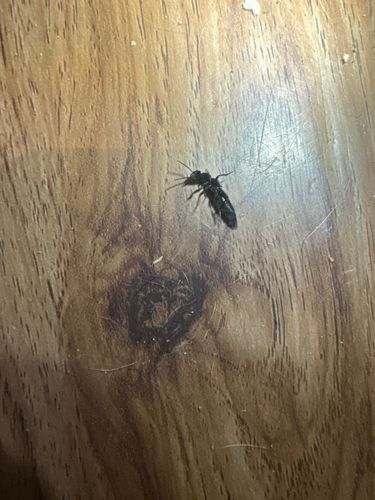Ant or Winged Ant (likely a reproductive form)
Scientific Name: Formicidae (family, specific genus/species difficult to determine from image)
Order & Family: Hymenoptera, Formicidae
Size: Typically 2mm to 25mm (0.08 to 1 inch) depending on the species and caste. The individual in the image appears to be on the smaller side, possibly 5-10mm.

Natural Habitat
Ants are found in almost all terrestrial habitats across the globe. Winged forms emerge from nests for mating flights. Depending on the species, nests can be in soil, wood, under rocks, or within structures.
Diet & Feeding
Ants have a diverse diet which includes nectar, seeds, fungi, other insects (both living and dead), and sugary substances. Winged forms may not feed much during their short reproductive flight.
Behavior Patterns
Ants are social insects living in colonies. Winged ants (alates) are reproductive males and females that emerge from the colony for a mating flight, often referred to as a 'nuptial flight.' After mating, males typically die, and the fertilized females (queens) shed their wings to establish new colonies. The one in the image appears to have wings or developing wing buds, indicating it might be a reproductive form. They are often active during warmer parts of the day.
Risks & Benefits
Risks: Some ant species can be nuisance pests, contaminating food, causing structural damage (e.g., carpenter ants), or delivering painful bites/stings. Benefits: Ants play crucial roles in ecosystems, including soil aeration, seed dispersal, predation of other insects (acting as natural pest control), and decomposition.
Identified on: 9/20/2025